Do Pigs Have Periods and Bleed?
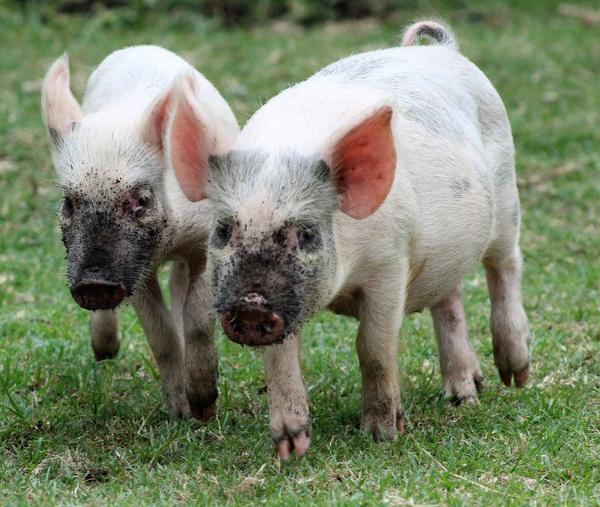
Have you ever wondered if pigs have periods?
Do you find it a bit bizarre and maybe even a little concerning?
I get it.
The thought of bleeding and reproductive cycles in pigs can be an unsettling topic. 😱
You might be imagining the worst-case scenarios right now.
But fear not, my curious friend.
Let's dive into the world of pig reproductive behaviors and see what we uncover.
Let's separate fact from fiction, shall we?
Pig Reproduction: Understanding the Estrous Cycle and Behaviors
Pigs have a unique estrous cycle
Here's what you should be aware of regarding pigs and their reproduction process.
Pigs have something called an "estrous cycle" that lasts around 18 to 24 days. During this time, female pigs go through two phases: the follicular phase and the luteal phase.
Every 21 days or so, they experience what we call "heat," where they become restless and vocal.
It's quite fascinating to witness these natural behaviors!
Did you know that female pigs have about 3 to 4 of these cycles per year?
Each cycle lasts for approximately 16 days.
So if you're thinking of breeding pigs, keep this in mind.
You must understand the timing of their reproductive cycles.
Male pigs also show some peculiar behavior
Now let's talk about the male pigs during the estrous cycle because they get a little wild too. These guys start behaving strangely, like humping objects and emitting a smelly discharge.
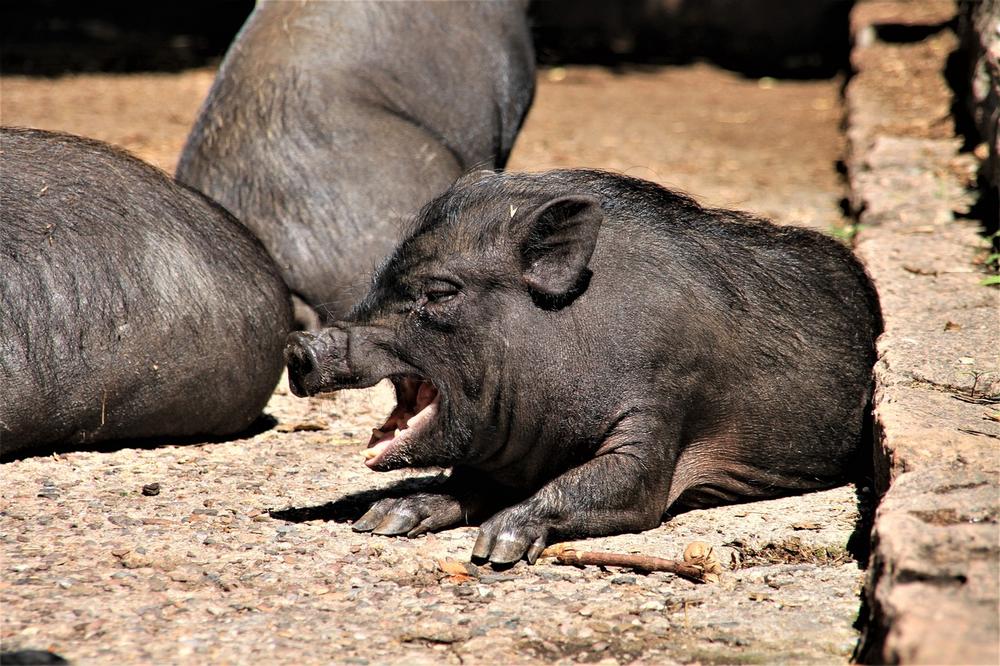
Quite the romantic, right?
But here's an interesting fun fact:
During the peak of the heat cycle, the ears of male pigs stand upright and twitch frequently.
It's like a way of saying, "Hey ladies, look at me!" They sure know how to show off!
Various factors affect pig ovulation and fertility
There are a few things that can impact a pig's ability to conceive. Factors like age, nutritional status, and the development of antral follicles all play a role. When it comes to mating gilts (young female pigs), it typically happens on their second or third estrous cycle after reaching puberty.
Ovulation usually occurs within 4 to 7 days after weaning.
Now, sows (adult female pigs) have a period of "lactational anoestrus" after giving birth, where they take a break from the breeding scene.
But don't worry, they can still get pregnant all year round!
And guess what?
Sows are real super moms... They can produce up to 5 litters per year.
Now that's what I call efficiency!
Oh, and when it comes to the number of piglets in each litter, it varies from 1 to 6 little cuties.
Main points I'll expand upon further down this article:
- Understanding vulva changes is crucial for pig farmers and breeders.
- Estrus cycles in pigs resemble menstruation in humans.
- If a pig does not become pregnant, its endometrium is reabsorbed.
- Visible changes in the vulva indicate a pig being in heat.
- Dark-colored pigs may require closer observation for hormonal changes.
- Regularly replace or clean bedding to maintain cleanliness and prevent infections.
- Artificial insemination is the preferred method of breeding pigs.
- Visible signs and behaviors indicate heat in pigs, such as pricking ears and restlessness.
- Spaying female pigs is recommended for long-term health and behavioral benefits.
- Guinea pigs have distinct breeding cycles and do not experience bleeding or menstruation.
Understanding Vulva Changes in Pigs During Heat
During a pig's heat period, there are visible changes in the vulva.
This is important for pig farmers and breeders to understand. The estrus cycles in pigs are similar to menstruation in humans but with some differences.
If a pig doesn't become pregnant, the endometrium is reabsorbed instead of being shed like in humans.
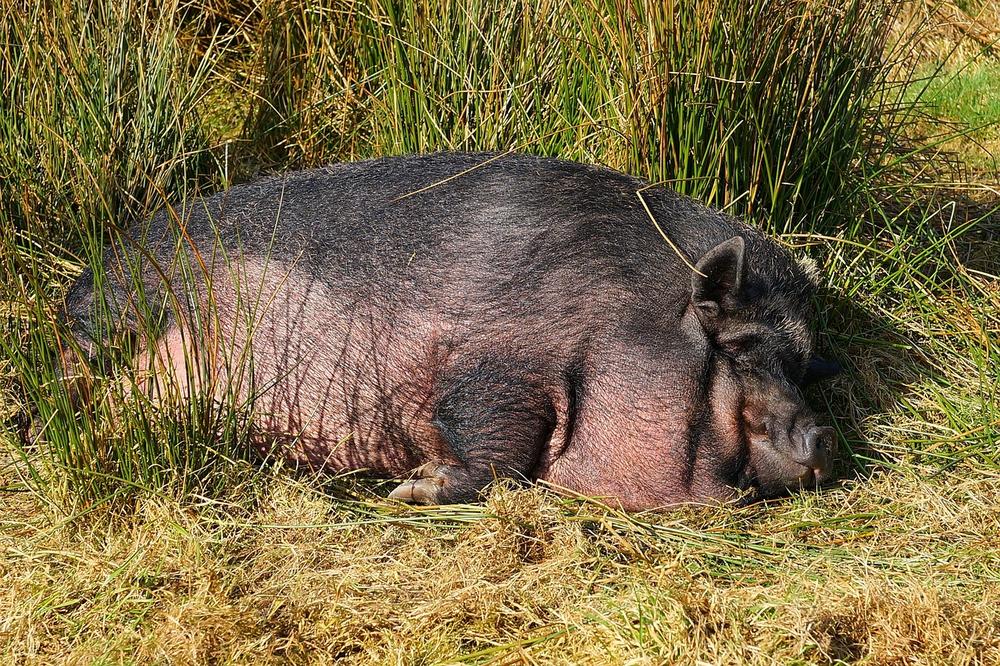
When a pig is in heat, you can see visible changes in the vulva such as swelling, intensified redness, a flattened clitoris against the body, and possibly a watery discharge. These physical traits, along with specific behaviors, indicate that a pig is in heat. It's especially crucial to observe these visual changes in dark-colored pigs since hormonal changes aren't easily detectable.
To prevent infections, it's important for pig farmers to maintain cleanliness by regularly replacing or cleaning bedding.
By understanding and monitoring these vulva changes during heat, pig farmers can effectively manage their breeding programs and optimize reproductive success. 😊
And now, let me share with you another fascinating method of detecting heat in pigs that can be a game-changer for large-scale pig farmers.
Are you ready to learn more?
Let's dive in!
Detecting Heat in Pigs and the Importance of It
Detecting heat in pigs is crucial for successful breeding. Signs such as restlessness, decreased appetite, and sows standing while being mounted by others indicate readiness. Artificial insemination is preferred, but guinea pigs have a narrow fertility window of 6 to 11 hours within a 20-hour ovulation period.
I'm telling you, another way to check if pigs are in heat is by using teaser boars.
What do I mean?
Well, these dudes have had the snip and they're basically brought in to see if the females are up for it.
Now, listen up. This method really comes in handy for those big pig farms out there.
But let me get into the nitty-gritty details with ya.
When a female pig is in the mood, she's gonna let you know.
You might notice her ears perking up - that's her way of saying, "Yo, I'm ready!"
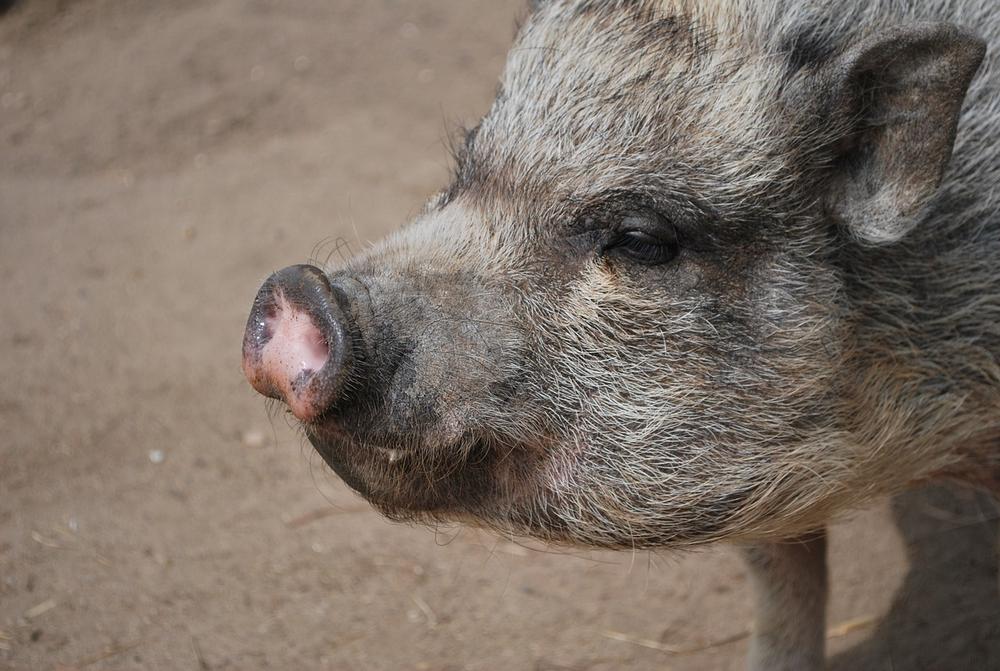
So here's the deal.
If you see other sows getting on top of her while she stands there, don't think it's just some friendly gathering. Nope, it's all part of their natural mating behavior.
And if your little piggie seems restless and doesn't wanna chow down like usual, well, it could be a sign she's feeling hot under the collar. Yeah, love can do that to ya, even to pigs!
Now, when we're talking about guinea pigs, things work a tad bit differently.
See, the window of fertility for female guinea pigs is pretty darn short - only 6 to 11 hours within a 20-hour span of ovulation.
So, if you've got plans for some adorable guinea pig babies in the future, you better keep an eye out for those few precious hours.
And it gets more interesting:
Did you know that some pigs experience bleeding from their vagina?
In the next section, we will delve into the causes of vaginal bleeding in pigs and whether it is a normal occurrence or a cause for concern...
The Significance of Spaying Your Pig
Deciding to spay your pig is a big deal, but it comes with some great perks.
First off, it puts an end to the hassle of dealing with a female pig's heat cycle.
For the ladies, spaying means removing their uterus and ovaries, which is important for their long-term health. It eliminates the chance of uterine infections, tumors, and other potential issues.
But wait, there's more!
Spaying also has a positive impact on the in essence well-being and lifespan of female pigs.
It reduces the risk of infections and tumors, plus it even helps with their behavior and cleanliness. If you get your pig spayed early on, before they reach five months old, you'll see the benefits in their easier handling, better demeanor, obedience, and absence of mood swings.
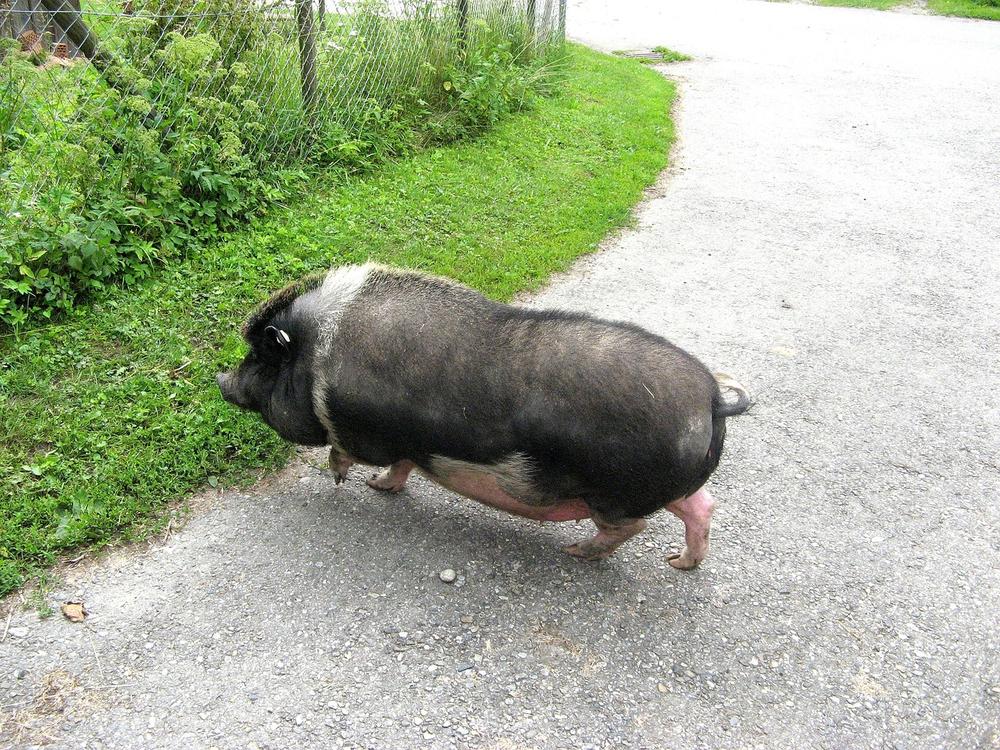
However, bear in mind that if you decide to spay your pig later, there might be some changes in their behavior. Just something to consider.
The cost of spaying can vary depending on the size of your pig.
It ranges anywhere from $100 to over $500.
If you want to check if your female pig has been spayed or not, look out for any scars or have a chat with your vet.
Oh, and here's another advantage of spaying:
It can prevent bleeding caused by bladder stones blocking the urethra. This can happen if your pig consumes foods that are high in calcium.
So, whether it's for the sake of convenience, health reasons, or to improve your pig's behavior, seriously think about getting them spayed.
You won't regret it.
Evolutionary Implications of Menstruation in Certain Mammals
Menstruation in certain mammals, such as humans, is believed to have evolved as a way to ensure the survival of offspring.
If fertilization does not occur, the uterine lining is shed through menstruation.
In contrast, species with an estrous cycle absorb the endometrium instead of experiencing bleeding.
Human beings have a hemochorial placenta, which leads to the birth of fewer offspring but with a higher chance of survival.
This is why humans have a menstrual cycle that helps eliminate the endometrium when fertilization doesn't happen.
The development of menstruation in specific mammals, like humans, is intricately linked to reproductive strategies and successfully producing viable offspring.
How Guinea Pig Reproduction Differs From Pigs
Unlike pigs, female guinea pigs do not have a visible estrous phase and do not experience bleeding during their estrous cycle. Guinea pigs have distinct breeding cycles and are only sexually active during a short window of opportunity. They can potentially have up to five litters in a year.
Listen up, I've got something interesting to share with you.
Guinea pigs have some quirky ways of doing their reproductive business that make them stand out from pigs and other animals.
First things first:
Female guinea pigs don't go through a visible estrous phase like pigs do.
And get this - they don't experience any bleeding during their estrous cycle either.
That's right, no dramatic moments like Scarlett O'Hara for these little critters.
Now, when it comes to breeding, guinea pigs have their own rhythm.
They go through four different phases during their estrous cycle: proestrus, estrus, metestrus, and diestrus.
But here's the thing - you won't see any blood during this time.
It's just not in their nature.
Unlike most mammals, domestic guinea pigs are active all year round.
However, there's a catch.
They're only in the mood for love during a short 24-48 hour period called estrus.
So if you want baby guinea pigs running around, you better act fast.
And here's another fascinating nugget of information:
Guinea pigs can start another heat cycle as soon as 15 hours after giving birth.
Talk about efficient!
That means they can potentially have up to five litters in one year.
These guys definitely know how to keep busy!
Now, let's talk about age.
Guinea pigs can become fertile as early as 4 weeks old.
Imagine that - barely out of the womb and already ready to join the adult club.
Female guinea pigs reach sexual maturity around 67 days, while males take around 56-76 days.
Some daring females may even breed as early as one month, but it's generally recommended to wait until they're seven months old for their first pregnancy.
The length of pregnancy varies from 59 to 72 days, typically averaging between 63 and 68 days.
And here's the thing - they usually give birth to helpless little buggers called altricial young.
The average litter size is two to four babies, which is perfect for a guinea pig-sized family.
Now, pay attention:
If you notice any bleeding in your guinea pig, it could indicate something serious.
It might be a sign of medical conditions like urinary tract infections, bladder stones, or even pyometra.
So if you see blood, ensure you seek veterinary assistance right away.
Knowledge is power. Now you know all there is to know about guinea pig reproduction.
Stay informed, stay curious, and keep an eye out for those adorable baby guinea pigs in your future.
Who knows, maybe you'll have a mini herd joining your family sooner than you think!
But what about the pigs?
How do they differ from guinea pigs in terms of their reproductive cycles and behaviors?
Well, get ready to dive into the fascinating world of pig reproduction, where behavior changes are unique to each individual and maintaining a clean environment becomes crucial for their in essence health and well-being.
Recommended Practices for Monitoring Pig Reproduction and Guinea Pig Care
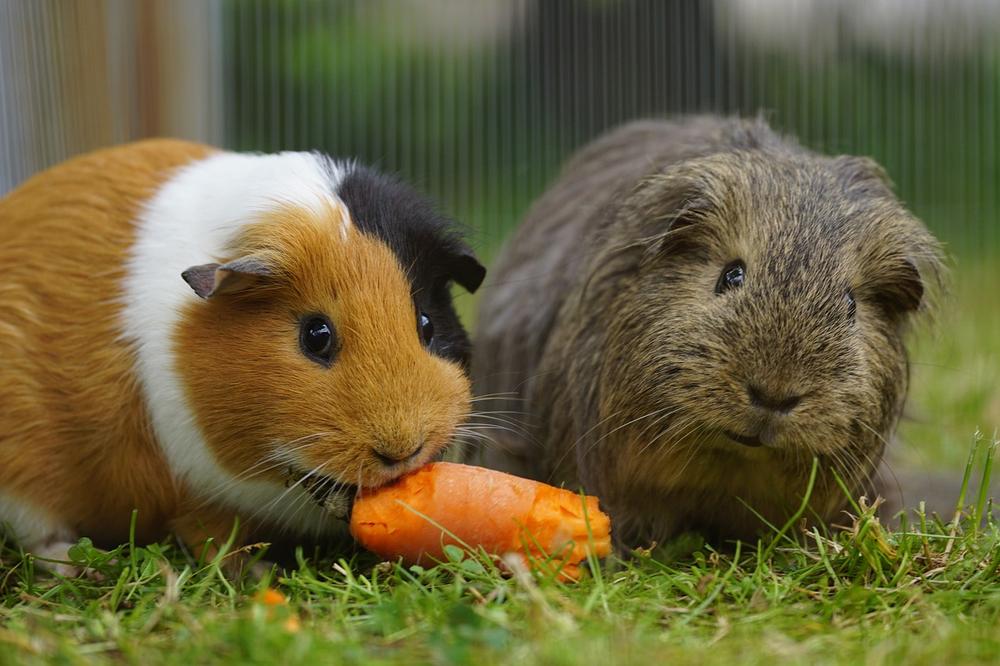
Following certain suggested methods, aid in ensuring the well-being and contentment of your pets, specifically regarding the supervision of pig reproduction and guinea pig care:
- Observe their behavior closely: Each pig's estrous cycle can vary, so you should monitor their reproductive patterns within their specific breed.
- Watch out for signs of health issues: Keep an eye on increased thirst, urination, and lethargy, as these could indicate potential health problems. Remember, guinea pigs can't communicate discomfort like humans do.
- Maintain a clean environment: To prevent illnesses and infections, regularly clean your guinea pig's cage. A daily spot cleaning and a thorough weekly cleaning can go a long way in ensuring hygiene.
- Provide a balanced diet: Blending fresh vegetables, high-quality hay, pellets, and occasional fruit treats will ensure that your pigs get the nutrition they need.
- Stay on top of veterinary visits: Regular check-ups with a knowledgeable veterinarian who specializes in pigs and guinea pigs will contribute to their all in all well-being.
Ensuring the well-being of your pigs and guinea pigs will be accomplished by implementing these suggestions because content and joyful pigs are a result of good health.
And that's all for today folks.
You made it to the end of my blog post, so let me ask you something. Did you enjoy reading it? I put a great deal of effort into writing blog posts that are informative and thorough. It requires a significant amount of time (which I absolutely love), so I would be extremely grateful if you could take a moment to click on any of the social sharing icons and share this blog post with others. Thank you so much!
Until next time,
-Chris Campbell